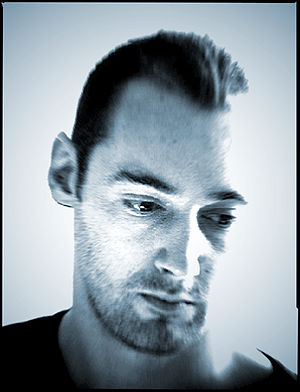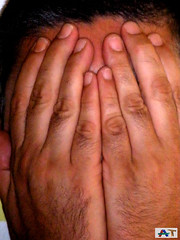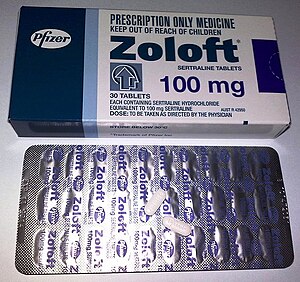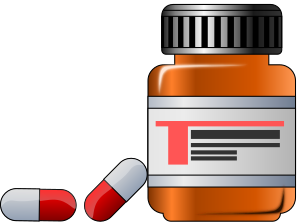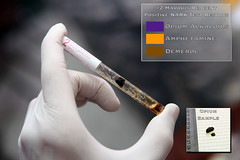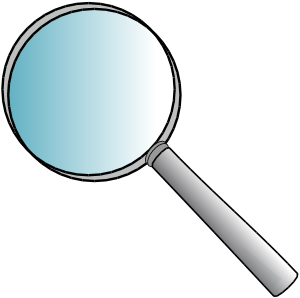Excerpt from WEAKEST LYNX
“So how many Zoloft are you popping each day?” Dave gingerly set his coffee on the table.
“That would be a fair indicator of how badly this guy’s getting to me. Right now? None.”
“Nerves of steel?” He was in professional mode, eyes scanning me, assessing. It felt intrusive; I lowered my lashes for privacy.
“Hardly. I’m trying to stay busy so when I fall into bed, I’m too exhausted to let the tap dancing in my stomach keep me awake.”
“So Zantac, not Zoloft, keeps you together?”
I focused on the mug I slid back and forth in front of me. “I guess.”
What causes depression and how can you tell if your character might be depressed?
There are many reasons for feeling depressed. Some people are affected by the amount of light available in the winter (SAD - Seasonal Affective Disorder), some people have an inherited propensity towards depressive episodes, while others experience depression following a traumatic experience. Medical issues such as thyroid disorders and diabetes can produce depressive symptoms. Also, brain trauma such as concussions or tumors can produce depressive symptoms. Researchers believe that depression is a physiological response to a hormonal disturbance (fewer neuro-transmitters such as serotonin.)
| Depression (Photo credit: Wikipedia) |
Depression is diagnosed when sadness is accompanied by helplessness, hopelessness, and worthlessness.
| (Photo credit: El Hermano Pila) |
* A depressed mood during most of the day, particularly
in the morning
* Fatigue or loss of energy almost every day
* Feelings of worthlessness or guilt almost every day
* Impaired concentration, indecisiveness
* Insomnia (an inability to sleep) or hypersomnia
* Fatigue or loss of energy almost every day
* Feelings of worthlessness or guilt almost every day
* Impaired concentration, indecisiveness
* Insomnia (an inability to sleep) or hypersomnia
(excessive sleeping) almost every day
* Markedly diminished interest or pleasure in almost all
* Markedly diminished interest or pleasure in almost all
activities nearly every day
* Recurring thoughts of death or suicide (not just fearing
* Recurring thoughts of death or suicide (not just fearing
death)
* A sense of restlessness or being slowed down
* Significant weight loss or weight gain
* A sense of restlessness or being slowed down
* Significant weight loss or weight gain
VIDEO QUICK STUDY - Causes of Depression (6:25) biology
NOTE: Your character probably won't demonstrate ALL of the signs. Pick five to work with.
Types of depression include:
* Major
* Dysthimia (chronic low level)
* Bipolar
* Seasonal (SAD or seasonal affective disorder)
* Psychotic
* Postpartum (many mental health workers include episodic depression related to the menstrual cycle, etc)
If you find yourself thinking about suicide please contact One of these National Suicide Prevention Hotlines
If you are a veteran, there is help specifically for you at this link to The Veterans Crisis Hotline
* Major
* Dysthimia (chronic low level)
* Bipolar
* Seasonal (SAD or seasonal affective disorder)
* Psychotic
* Postpartum (many mental health workers include episodic depression related to the menstrual cycle, etc)
How might your character look?
Of course, your character will have her own way of expressing her depressed state.
| (Photo credit: Wikipedia) |
* Flat affect - which means that the face is slack and
does not register a normal range of emotion
* Weight changes which make clothing too tight or hang
from their frames.
* Dark circles under the eye if the character is
experiencing insomnia
* An unkept appearance which might include
uncharacteristically:
`Wearing the same clothes day after day without
washing them
` Unwashed hair
` Unshaven
` Body odor
` Mismatched clothing
* The unkept appearance will extend to their home and environments
* Gray pallor
* Stooped posture
* Dragging gait
* Vacantly staring
* Frowning
VIDEO QUICK STUDY, TED Talk: We Need to Talk About Depression (9:30) Excellent description of what a character would feel/experience.
How might your character act?
* Difficulty concentrating, remembering details, and making decisions
* Fatigued with decreased energy
* Not reactive to sound or interaction
* Feelings of guilt, worthlessness, helplessness, and/or hopeless/pessimism
* Insomnia or excessive sleeping
* Irritable
* Insomnia or excessive sleeping
* Irritable
* Restlessness
* Loss of interest in activities or hobbies
* Loss of pleasure in life
* Loss of interest in activities or hobbies
* Loss of pleasure in life
* Loss of sex drive
* Change in appetite
* Persistent aches or pains such as headaches, cramps,
* Digestive issues that do not respond to conventional treatment.
* Change in appetite
* Persistent aches or pains such as headaches, cramps,
* Digestive issues that do not respond to conventional treatment.
* Feeling sad, anxious, and/or emptiness
* Lathargic gestures and movements
* Their eyes may be red or wet and blink infrequently
* Lathargic gestures and movements
| English: Human Experiences, depression/loss of loved one (Photo credit: Wikipedia) |
* Little to no social interaction
` ignoring computer or phone messages
` No visitors/isolation
* Suicidal thoughts or suicide
attempts
Your character may try to hide their depression by:
Your character may try to hide their depression by:
* Self-medicating (drugs/alcohol)
* Forced positive emotions like being on
the stage and performing.
* Overly bright fake smiles
* Telling people that they have been ill - flu etc.
During this period your depressed heroine might be a target to nefarious characters because she may have diminished:
* Observational skills
* Ability to concentrate
* Time sequencing skills
* Concern for self-harm
Things that might help your character:
Things that might help your character:
* A physical exam to rule out various medical issues
* Exercise
* Refraining from unprescribed drug use and alcohol consumption
* Nutritious food
* Caring friends, family, coworkers
* Meditation/yoga
* Therapy
* Medications
| Zoloft (photograph) (Photo credit: Wikipedia) |
Common medications include (top 10):
* Cymbalta
* Lexapro
* Effexor
* Zoloft
* Celexa
* Trazadone
* Prozac
* Welbutrin (anxiety)
* Citalopram
* Pristiq
Why Should My Character Have Follow Up Appointments With Her Diagnosing Physician?
1. If a character is suicidal, but is too depressed to act on their ideations,
* They don't have the strength to carry through with the suicidal
act.
act.
* Once the medications have started to act in the character's
system, and they start up the hill towards
system, and they start up the hill towards
recovery, the character might reach a point where suicidal
ideations and physical ability intersect and
ideations and physical ability intersect and
that can be disastrous.
* A monitoring physician might be able to intercede if this is
disclosed in therapy.
disclosed in therapy.
2. Many people do not like the side-effects of the medications.
* As soon as they start to feel better they stop taking their pills.
* The pills have an effect on the body system.
* If the character was taking pills to increase serotonin, for
example, her body might stop producing
example, her body might stop producing
serotonin on its own.
* When the patient suddenly stops taking the medication, they
are often in a worse place than when they
started. This could be a very interesting plot twist. ( Patients
are weaned slowly and with careful
monitoring from psychotropic meds.)
are often in a worse place than when they
started. This could be a very interesting plot twist. ( Patients
are weaned slowly and with careful
monitoring from psychotropic meds.)
Should you recognize yourself in any of this information. Please seek help from your physician. Depression is a physiological disorder.
If you find yourself thinking about suicide please contact One of these National Suicide Prevention Hotlines
If you are a veteran, there is help specifically for you at this link to The Veterans Crisis Hotline



